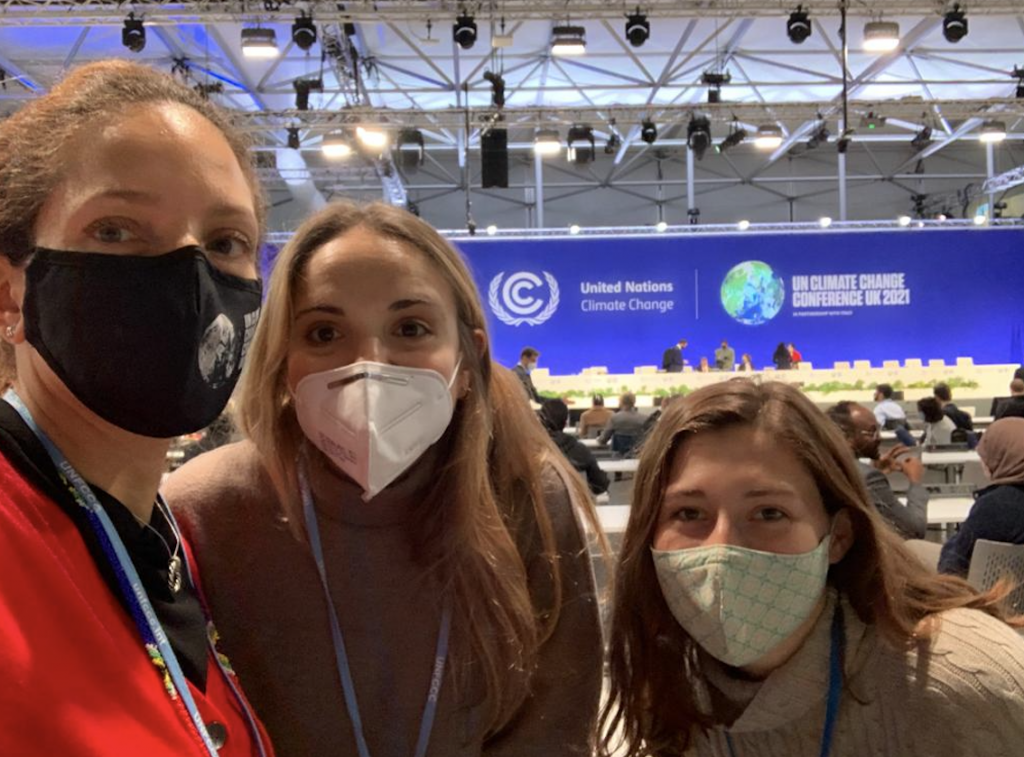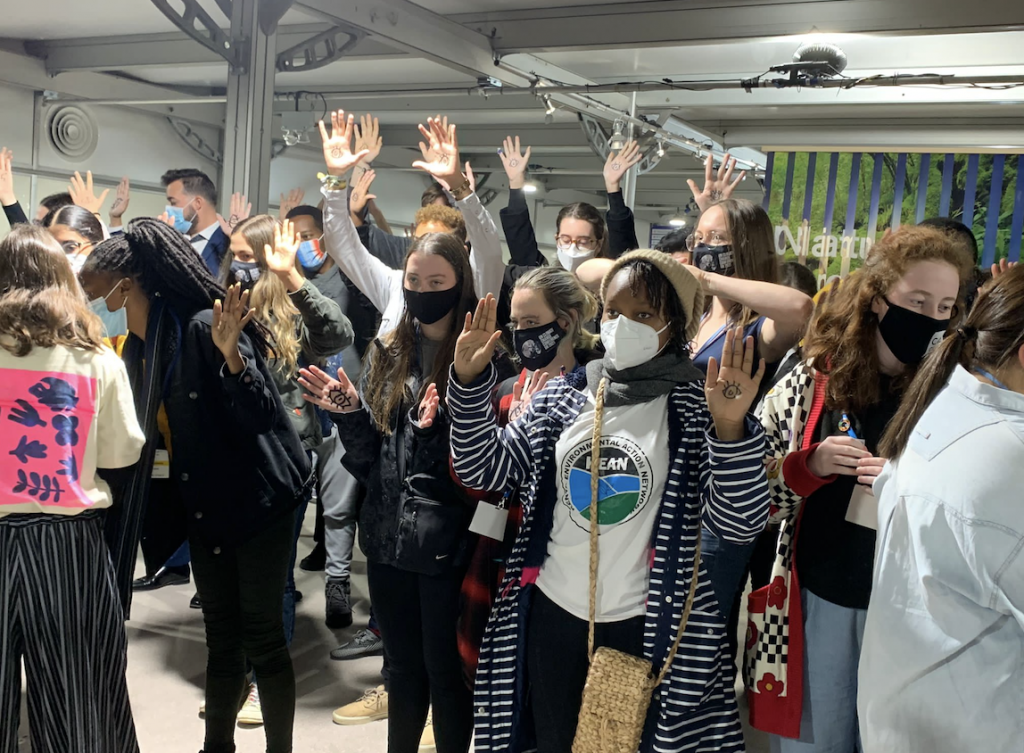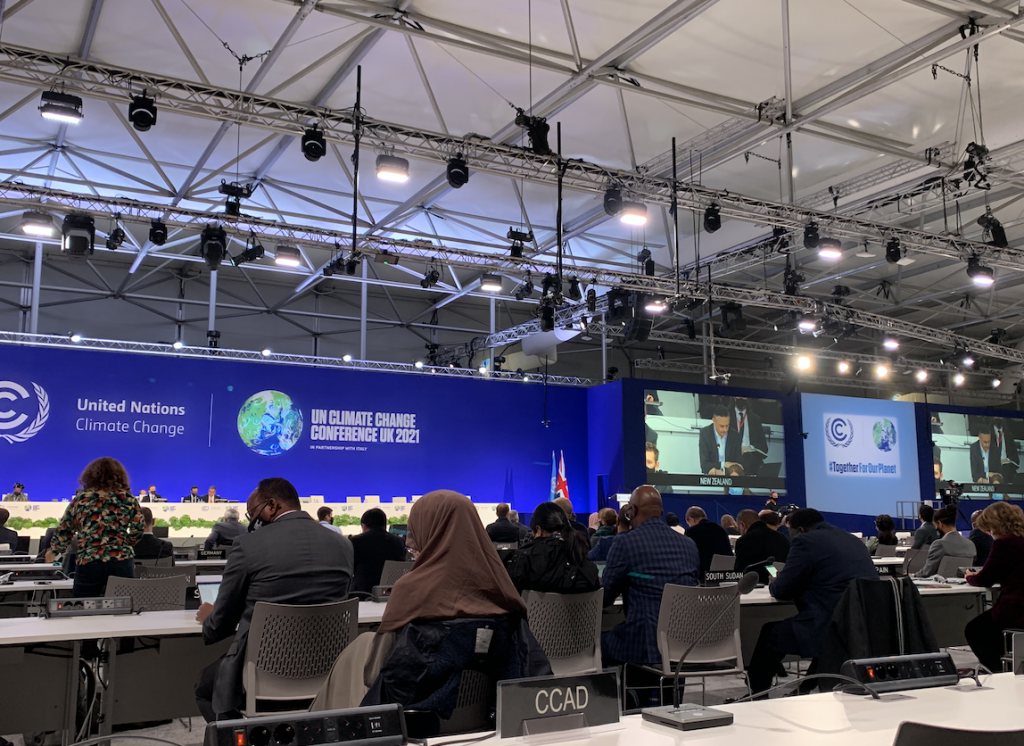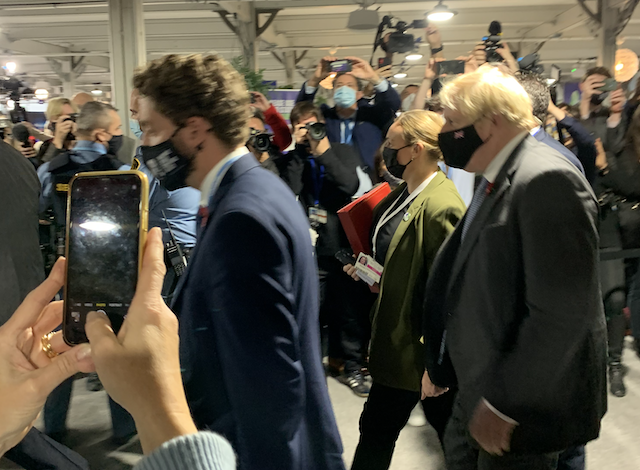
Judging by the official COP26 calendar,* Wednesday, November 10th looked to be an uneventful day with no large plenaries on the schedule, nor were there many side events. This took us by surprise, as no other day looked this light. But, Wednesday did not disappoint. The release of the first summary draft of COP26 sent a jolt through the halls of the Blue Zone of COP26. As we gathered outside of the plenary rooms waiting to hear the first informal consultations on this draft, a protest was taking place in the same spot: Fridays for Future‘s young activists gathered the attention of everyone, ranging from the media to Parties to observers.

As the doors to the plenary room opened, parties and observers flooded into the massive space in a constant flow. By the time COP President Alok Sharma shared his opening remarks and the go-round between the ministers commenced, the room was packed, with every seat occupied. Teams of ministers — one from a developing country and one from a developed country — took turns to report on their various thematic responsibilities, such as climate finance and the Enhanced Transparency Framework Agreement of the Paris Agreement, a mechanism for countries to report data on emissions, NDC progress, and climate change impacts. The representative from Switzerland proudly spoke up first, reporting that parties had agreed that an end date for producing NDCs was a necessary result of COP26. The representative from Maldives, on behalf of the adaptation committee, reported that they agreed on the need for a 2-year work program and that work must start immediately. Luxembourg and Jamaica, on behalf of Loss and Damage, called for new and additional funding, as they highlighted that linkages between loss and damage and climate finance have far too long been overlooked. Denmark and Grenada stressed 1.5 degrees C of warming as the only option (as compared to the consideration of 2 degrees in the Paris Agreement). Several parties spoke after, reflecting the substantive work they had done while also emphasizing a call for more action and ambition.

After this go-round, the COP President summarized from his view the achievements of the week, along with necessary steps forward. President Sharma will be meeting with parties Wednesday night to finalize draft resolutions ahead of tomorrow’s morning meeting. He urged parties to “come armed with the currency of compromise” as we head into the last two days of COP26 in Glasgow. Sharma closed by emphasizing that “what we agree on in Glasgow will set the future for our children and grandchildren.”
After these remarks, the EU representative minister asked for the ground and applauded the inclusion of gender and indigenous rights in the draft text. The representative emphasized the importance of adaptation, defining the EU’s “leadership role” in this issue area, and clear and immediate action on adaptation and all aspects of climate change. “The EU is here.” was his message. The Guinean representative, on behalf of G77 and China, followed these remarks and expressed disappointment in the lack of progress on climate finance, especially the “lack of appetite” on devising a common definition of multilateral climate finance. His remarks also emphasized the importance of Loss and Damage. Gabon’s representative, on behalf of the African Group, and Bhutan’s minister, speaking for the LDCs (least developed countries), echoed many of the Guinean representative’s points. Bolivia’s representative pushed even further, stating that the common position of the draft did not represent the views of all countries and was actually a narrative working to shift responsibility to developing countries.
Soon after the conclusion of this meeting, Day 3 witnessed the arrival of the UK Prime Minister, Boris Johnson. We happened to be right there as he walked by and someone from the crowd shouted: “Is it too late to save the summit, Prime Minister?” Is it?

*The calendar was updated midday, but it originally showed very few events, which was confusing to non-insiders.